Tourcode: IC3
- Overview
- Info & Inclusions
- Itinerary
- Map & Hotels
- Photos
- Dates & Prices
- Max Group Size 18
- Reykjavik city tour
- 'Golden Circle' tour: Geysers, waterfalls
- Arctic terns, puffins, guillemots
- Bubbling mud craters
- Spectacular Snaefellsnes Peninsula
- Singles friendly (view options for single travellers)
Many consider Iceland to be one of the world's most visually stunning countries. Our Iceland group tours move at a fast pace, trying to best capture the waterfalls, black sand beaches, hot springs, and rugged mountains that feature in nearly every postcard perfect scene. Join us as we take on the Golden Circle Route, and along the way find vast areas of fjords, glaciers, volcanoes with lava fields and more waterfalls than one could count.
Our Iceland group tours start in Reykjavik, a walkable capital that happens to be one of the youngest capitals in Europe after only being established in the 19th century. Iceland is also the last country in Europe to be settled, with nearly half of its inhabitants residing in or around the capital.
Between museum visits and seafront walks, the link between Iceland and Nordic cultures is easily visible.
Travelling outside of the city, the naming of the land of fire and ice becomes instantly apparent. For the relevance of ice, we explore the giant ice caps found at Eyjafjallajokull, which feeds the enchanting waterfalls of Seljalandsfoss and Skogafoss, to the Vatnajokull, translating as 'glacier of rivers.'
It is the largest glacier in Iceland and is located in the southeast of the country. At 8,100 square kilometres it is the second largest glacier in Europe and the average thickness of the ice is an incredible 400m. We will board a boat to discover the breathtaking Jokulsarlon Glacial Lagoon also known as the birthplace of icebergs.
In terms of fire, volcanic action has shaped and continues to shape Iceland into the dramatic land it is. We will venture to the peculiar lava formations at Dimmuborgir and the pseudocraters at Skutustaair. We will also see the volcano Krafla, famous for its 'Krafla Fires,' curtains of lava fountains from a system of fissures inside the huge caldera.
The combination of the two natural features of fire and ice is best discovered in places such as the East Fjords. This stunning mountain region has been sculpted as much by glaciers as volcanic activity. On the Snaefellsnes Peninsula, the landscape is a gallery of strange and beautiful lava formations, the skies are filled with birds, and the sea is alive with marine life.
The abundance of marine life is what allowed settlement to thrive in this near-Arctic country. Small fishing villages still dot the landscape, and a trip to Iceland is not complete without a whale-watching trip to spy the Minke whales, humpbacks or even the giant blue whale.
Many come to Iceland for the scenery, fall in love with the culture and dream of returning again and again. Find out why on one of our Iceland group tours.
- MealsSavour authentic flavours with included daily breakfasts and dinners at hotels or handpicked local restaurants—immersing you in local cuisine without worrying about reservations or budgets.
- Transport & Logistics
Private air-conditioned coaches and included internal ferries and flights—ensuring hassle-free travel so you can focus entirely on the discoveries ahead.
"Adventures Abroad tour leader's management and guest services managed the tour with great skill and dedication. The tour leader was on top of every move and transfer. We have not experienced any issues with logistics and had a great time."
~ JULIA O"The tour leader did an excellent job coordinating some difficult travel logistics, power outage issues and resolving problems and dealing with guests who had unrealistic expectations."
~ CYNTHIA COLLINS - Expert Guidance
Unlock insider secrets at every landmark with your full-time Tour Leader and expert local guides , all gratuities covered—no hidden tipping surprises—so you immerse fully in your destination's stories, worry-free. (Except for the tips to your tour leader at the end of your tour.)
"Amazing tour guide. Our tour guide was very well organized, Her passion, knowledge, and enthusiasm completely transformed the travel experience into something truly unforgettable..."
~ MELANIE LEMAIRE"Highly recommend every trip with Adventures Abroad. It's a well organized and well thought out adventure. The tour leaders are friendly, knowledgeable and experienced professionals. Highly recommend this company."
~ SUSAN WALL - Sightseeing & EntrancesAll entrance fees for sites visited as per the itinerary—no hidden costs—so you can explore ancient ruins and excursions with complete peace of mind.
- AccommodationsUnwind in clean, well-located 3 to 4-star hotels with private en suite facilities—handpicked for comfort and convenience after each day's discoveries—so you can rest easy knowing your stay supports the real adventure, not steals the spotlight.
- Small Group
Discover the world in small groups of up to 18 travellers plus your expert Tour Leader—unlocking spontaneity, off-the-beaten-path adventures, and genuine connections at a relaxed pace, free from crowds.
"Looking Forward to My Next Adventure The best feature of the Adventures tour was the small size that allowed the group to quickly load up, let everyone get acquainted within the first 24 hours, capitalize on unplanned surprises along..."
~ PHILIP BLENSKI"Good value for a great time I have traveled with Adventures Abroad for over 20 years now. Well thought out, interesting itineraries and the other travelers congenial and friendly. The price always seems fair and overall a..."
~ Trusted Customer - Airport Transfers For Land & Air CustomersWe handle hassle-free airport transfers for all our land and air tour customers—plus early arrivals or late departures when you book extra hotel nights directly with us for added peace of mind.
- International airfare to/from the tour. Tour Leader gratuities, lunches, drinks, personal items (phone, laundry, etc), international air taxes (if applicable), any excursions referenced as 'optional'. Airport transfers for Land Only customers.* Optional trip cancellation insurance. Our post-reservation trip notes offer further guidance on optional meal costs and shopping.
- * Beware private airport transfers in Iceland are costly. Taxis are reliable and much cheaper.
- Seasonality and Weather:
The range of temperatures experienced on this tour will be WIDE. Though there will be many comfortable, summer-like days at locales visited, Iceland, as the name suggests, can still feel very wintry if you are near the sea, in a place exposed to winds, or near an icefield.
July / August is mid-summer in Iceland, and daylight hours are long and temperatures are at their most comfortable. That said, summer temperatures are still on the cool-ish side, ranging from 9-14 C (48-58 F) on average, though some days could be up to 20 C+ (68-70 F) depending on aspect.
Our September date will be slightly cooler, with shorter daylight hours and temperatures from 7-12 C (44-55 F), on average with some exceptions, and also depending on aspect and prevailing weather.
There is no dry season in Iceland, with precipitation spread evenly throughout the year. - Transport and Travel Conditions:
Land transport provided by private heated motor coach, 25-40 seats depending on ultimate group size.
This is not a strenuous tour per se, but it is busy with lots of moving around, full travel days, and early starts. There are also sites that require a bit of walking in order to view the attractions (views, waterfalls etc) as they are usually located well away from parking areas.
Am I suitable for this tour? Please refer to our self-assessment form - Activity Level: 2
These are particularly busy tours that feature a lot of moving around, sometimes by train and short journeys on local transport. Walking tours of towns and cities are leisurely but you should be prepared to be on your feet for several hours. Some of our cultural trips that occur at high altitude and/or require greater independence with baggage handling (at hotels, airports, train stations) also fall into this category.
To learn more about the Activity levels, please visit our tour styles page. - Accommodation:
Mid-range, well-located, heated, simple hotels and inns throughout. Many are smaller properties (2-3 story) and, outside of the capital, may not have elevators. All hotels have en suite toilet and bath, though some will have shower only (no tub). Porters may be available (see 'Inclusions'), though you must be prepared to manage your own luggage to and from your hotel room. - Staff and Support:
Tour Leader, driver/s, local step-on guides at some locales. - Group Size:
Maximum 18 (plus Tour Leader)
- Day 1:Arrive in ReykjavikWelcome to Iceland. We arrive in Reykjavik, Europe's northernmost capital and one of its youngest, established only in the late 19th century. Iceland itself was the last European country to be settled—Irish monks arrived in the 8th century but departed when Norse settlers systematically colonized the island between 870 and 930 CE.
More than half of Iceland's people live in or around the capital, leaving the highland interior virtually uninhabited. This evening provides time to explore the compact city centre independently.
Overnight in Reykjavik.
Included Meal(s): Dinner, if required - Day 2:Reykjavik City TourThis morning, we embark on a walking tour of Reykjavik, starting in the historic Old Town, centered around the serene Tjornin pond, where Ingolfur Arnarson founded the original settlement in 874. As we stroll through this charming area, we'll pass by the modern Town Hall and Althing, Iceland's National Assembly, which occupy the shores of the pond, blending history with modern governance.
Next, we visit the National Museum of Iceland, where we'll uncover the Viking and Icelandic heritage through an impressive collection of artifacts, including religious relics, traditional tools, and objects from the settlement period. These exhibits reveal the ingenuity and adaptability of Iceland's early inhabitants, who thrived in this rugged environment.
As we continue our seafront walk, we'll take in the stunning city Cathedral, Parliament House, and the iconic Hallgrimskirkja church, a striking 73-meter-tall landmark that dominates Reykjavik's skyline.
The afternoon is ours to explore this vibrant, walkable city independently, discovering its quirky cafes, colorful buildings, and lively cultural scene.
Overnight in Reykjavik.
Included Meal(s): Breakfast and Dinner - Day 3:Geysir - Gullfoss Waterfall - South Shore - VikWe depart Reykjavik for Thingvellir National Park, a UNESCO World Heritage site where the world's first democratic parliament convened in 930 CE. The location holds geological significance as well—the North American and Eurasian tectonic plates meet here, creating dramatic fissures and Iceland's largest lake, Thingvallavatn.
We continue to the Golden Circle region to visit Gullfoss, the "Golden Waterfall," where the Hvita River plunges in two stages into a narrow canyon. Nearby, the Geysir geothermal area features Strokkur, which erupts every 5-10 minutes, shooting boiling water up to 30 metres into the air. Hot springs and bubbling mud pools dot the landscape, evidence of the volcanic activity beneath.
Travelling along the south shore, we pass Eyjafjallajokull ice cap, whose 2010 eruption disrupted European air traffic for weeks. The glacier feeds numerous waterfalls including Seljalandsfoss, where a path leads behind the cascading water, and Skogafoss, a powerful 60-metre drop. We continue to Vik, stopping at the black sand beach where basalt columns meet the Atlantic.
Overnight in the Vik area.
Included Meal(s): Breakfast and Dinner - Day 4:Vik - Vatnajökull National Park - Jokulsarlon Lagoon - HofnAs we journey through Iceland's breathtaking landscapes, we cross Eldhraun, formed by the largest lava flow ever recorded. In 1783-84, the Laki fissure eruption produced 15 cubic kilometres (3.6 cubic miles) of lava, covering 565 square kilometres (218 square miles) and causing widespread famine across Iceland and Europe.
Continuing across Skeidararsandur sands, we arrive at Vatnajokull National Park, home to the Jokulsarlon Glacial Lagoon. Here, icebergs calve from Vatnajokull glacier and drift slowly toward the ocean not far away. We board a boat to cruise among these majestic ice formations, some centuries old, ranging from brilliant blue to stark white, depending on air content and compression.
We also embark on a guided jeep tour onto Vatnajokull glacier itself, a breathtaking experience that brings us up close to this natural wonder. Translating as "glacier of rivers," Vatnajokull is Iceland's largest glacier, spanning an impressive 8100 square kilometres (3,126 square miles), with ice averaging 400 metres (1,312 feet) thick. Numerous active volcanoes lie beneath the ice, creating a unique landscape of fire and ice in literal terms.
As we take in the majesty of this incredible region, we'll overnight in Hofn, surrounded by the awe-inspiring beauty of Iceland's glacial landscapes.
Overnight in Hofn.
Included Meal(s): Breakfast and Dinner - Day 5:Hofn & East FjordsToday we embark on a journey through the East Fjords, where towering mountains drop precipitously into the sea, creating a breathtaking landscape of deep, tranquil inlets and narrow, rugged headlands. Glaciers and volcanic forces have sculpted this dramatic region over millions of years, crafting a unique and awe-inspiring scenery.
As we wind our way along the coastal road, we pass by scattered farms clinging to the rare patches of flat ground, where hayfields stretch towards the water's edge. The isolation and beauty of these East Fjord landscapes are memorable for their grandeur.
We make a fascinating stop at Petra's stone collection in Stodvarfjordur, a remarkable private museum showcasing an astonishing array of minerals and rocks found in the surrounding mountains. Petra's passion for geology is evident in her impressive collection, which reveals the incredible geological diversity that makes Iceland a paradise for rock hounds and nature enthusiasts alike. Marvel at the glossy basalt, gleaming obsidian, vibrant zeolites, and glittering crystals, all formed by the region's intense volcanic and geothermal activity.
As the day unfolds, we continue to Egilsstadir, the charming capital of east Iceland, nestled in the heart of this stunning region. Tonight, we'll rest in the tranquility of Egilsstadir, surrounded by the unspoiled beauty of Iceland's East Fjords.
Overnight in Egilsstadir.
Included Meal(s): Breakfast and Dinner - Day 6:Jokulsargljufur Canyon - Asbyrgi - HusavikWe cross the highland desert plateau Modrudalsoraefi before reaching Jokulsargljufur Canyon in Vatnajokull National Park. At Dettifoss, Europe's most powerful waterfall, 193 cubic metres (6,800 cubic feet) of glacial water thunder over a 44-metre (144-foot) drop every second, creating a roar audible from far away and sending spray high into the air.
We continue to Asbyrgi, a horseshoe-shaped canyon with sheer cliffs rising 100 metres (328 feet). According to Norse mythology, the canyon formed when Odin's eight-legged horse Sleipnir touched one hoof to earth. Geologists attribute it to catastrophic glacial flooding, but the mythological explanation seems equally plausible when standing in this dramatic amphitheatre.
By afternoon we reach Husavik, Iceland's whale-watching capital. Founded by Swedish Viking Gardar Svavarsson in 870, this fishing village occupies a sheltered bay on the northeast coast. Overnight in Husavik.
Overnight in Husavik.
Included Meal(s): Breakfast and Dinner - Day 7:Husavik Whale Watching - Godafoss - AkureyriWe set off on an a whale-watching cruise from Husavik, a charming coastal town that's renowned for its exceptional marine life. As we venture into the nutrient-rich waters, we're on the lookout for Minke whales and playful white-beaked dolphins, which are frequent visitors to these feeding grounds. Keep an eye out for humpbacks, orcas, and the majestic blue whale, which occasionally make an appearance in these bountiful seas.
After our whale-watching excursion, we visit the Whale Museum, which offers a fascinating glimpse into the world of these marine mammals and Iceland's complex whaling history. Gain a deeper understanding of the intricate relationships between these creatures and their habitats, and learn about the conservation efforts underway to protect them.
Next, we head south to Godafoss, the breathtaking "Waterfall of the Gods," steeped in history and legend. According to tradition, in 1000 CE, when Iceland's Althing voted to adopt Christianity, the lawspeaker threw his pagan idols into these falls, giving the waterfall its evocative name. The Skjalfandafljot River plunges 12 metres (39 feet) across a 30-metre-wide (98-foot-wide) arc, creating one of Iceland's most picturesque and photogenic cascades.
As the day unfolds, we arrive in Akureyri, the vibrant "Capital of the North," situated just 60 kilometres (37 miles) south of the Arctic Circle. This charming town of 20,000 inhabitants serves as northern Iceland's cultural and commercial hub, boasting beautifully restored timber buildings and a compact centre that's perfect for independent exploration. Tonight, we'll rest in Akureyri, surrounded by the warmth and hospitality of this lovely town.
Overnight in Akureyri.
Included Meal(s): Breakfast and Dinner - Day 8:Akureyri & Lake MyvatnLake Myvatn and its surroundings showcase Iceland's volcanic activity. The lake formed 2300 years ago from a basaltic lava eruption, creating exceptionally rich wetlands that support abundant birdlife. We explore Dimmuborgir's strange lava formations—hollow pillars and caves created when lava flowed over water, generating steam that formed these structures.
At Skutustadir we see pseudocraters, formed when lava flowed over wet ground, causing explosive steam eruptions that created crater-like formations without any actual volcanic vents beneath. These differ from true craters, which connect to magma chambers below. We visit Krafla volcano, famous for its "Krafla Fires" of 1975-1984 when fissures inside the caldera produced lava fountains.
At Namaskard Pass, boiling mud pools bubble and hiss, while mineral deposits paint the ground in vivid yellows, oranges, and reds. The massive Hverfell crater, formed 2500 years ago, rises 463 metres (1,519 feet) with a diameter of 1040 metres (3,412 feet).
We conclude our day relaxing in Myvatn Nature Baths, where geothermal water drawn from 2500 metres (8,202 feet) depth maintains a comfortable 38-40C (100-104°F) temperature.
We also visit Akureyri's Botanical Garden, one of the world's northernmost, showcasing plants adapted to extreme seasonal variations.
Overnight in Akureyri area.
Included Meal(s): Breakfast and Dinner - Day 9:Skagafjordur - Snaefellsnes PeninsulaAn early start takes us west through Skagafjordur, one of Iceland's most prosperous agricultural regions. Unlike most of Iceland where residents cluster in towns, a quarter of Skagafjordur's population lives on farms. This is Iceland's horse-breeding heartland—the only county where horses outnumber people.
We visit the Skagafjordur Heritage Museum to see a 19th-century turf church, one of only six remaining in Iceland. These structures, with walls of stacked turf and grass roofs, provided insulation in a country with limited timber. We also visit Eirikstadir, a reconstructed Viking longhouse where Erik the Red and his son Leif Eriksson—the first European to reach North America—once lived. The reconstruction offers insight into settlement-era life and introduces Iceland's rich saga tradition.
We cross westward to the Snaefellsnes Peninsula, a microcosm of Iceland's diverse landscapes concentrated in one region. The peninsula has been inhabited since settlement times and features prominently in medieval sagas.
Overnight in the Snaefellsnes area.
Included Meal(s): Breakfast and Dinner - Day 10:Snaefellsnes Peninsula TourWe explore the Snaefellsnes Peninsula, circling from the north coast to the western tip and along the southern shore. Legend holds that Christopher Columbus spent a winter at Ingjaldsholl, where he heard stories of lands to the west—possibly influencing his later Atlantic voyage.
We visit Vatnshellir Cave, an 8000-year-old lava tube created when surface lava cooled and crusted while molten lava continued flowing beneath, eventually draining and leaving this hollow tube. Our 45-minute guided tour (helmets and flashlights provided) descends into the tunnel, revealing layered rock formations and explaining volcanic cave formation. Reasonable fitness is required for the stairs and uneven surfaces.
The fishing village of Grundarfjordur sits beneath the distinctive cone of Kirkjufell Mountain, one of Iceland's most photographed peaks. We continue through Snaefellsjokull National Park, where the Snaefellsjokull glacier crowns the peninsula. This 1446-metre stratovolcano inspired Jules Verne's "Journey to the Center of the Earth," in which the entrance to the earth's interior lay beneath this glacier.
At Arnarstapi, we walk among dramatic coastal rock formations where Atlantic waves have carved arches and pillars from the basalt cliffs. Arctic terns, fulmars, and kittiwakes nest on the cliffs in summer, filling the air with their calls.
Overnight in the Snaefellsnes area.
Included Meal(s): Breakfast and Dinner - Day 11:Snaefellsnes Peninsula - ReykjavikWe visit the Icelandic Settlement Centre in Borgarnes, which recounts Iceland's colonization through interactive exhibits focusing on the sagas of Egil Skallagrimsson, one of Iceland's most famous Viking-age poets and warriors.
We continue to Deildartunguhver, Europe's most powerful hot spring, producing 180 litres (47 gallons) of boiling water per second. The water, heated by geothermal activity, supplies heating to communities 65 kilometres (40 miles) away.
At Hraunfossar, we see a series of waterfalls streaming from beneath Hallmundarhraun lava field. Rather than a single cascade, hundreds of rivulets emerge from the porous lava over a 900-metre (2,953-foot) stretch, creating a unique curtain of water.
We arrive in Reykjavik by early afternoon, allowing time for final exploration before our farewell dinner.
Overnight in Reykjavik.
Included Meal(s): Breakfast and Dinner - Day 12:DepartureDeparture from Reykjavik.
GODA FERD!
Included Meal(s): Breakfast
Countries Visited: Iceland
*The red tour trail on the map does not represent the actual travel path.

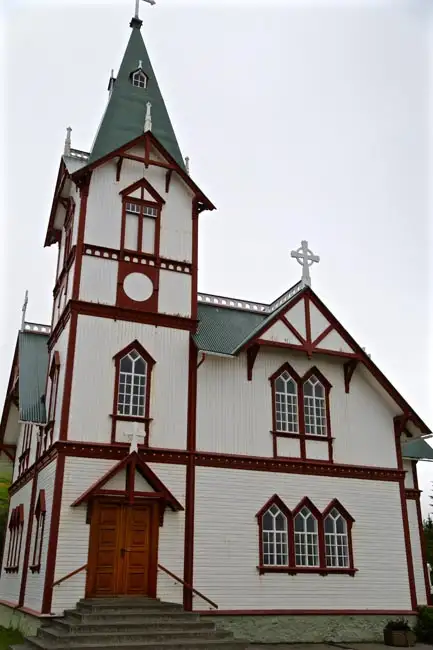
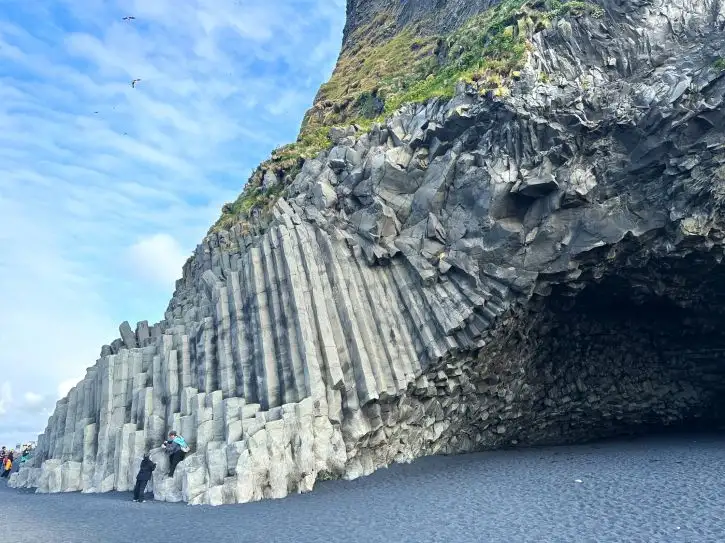
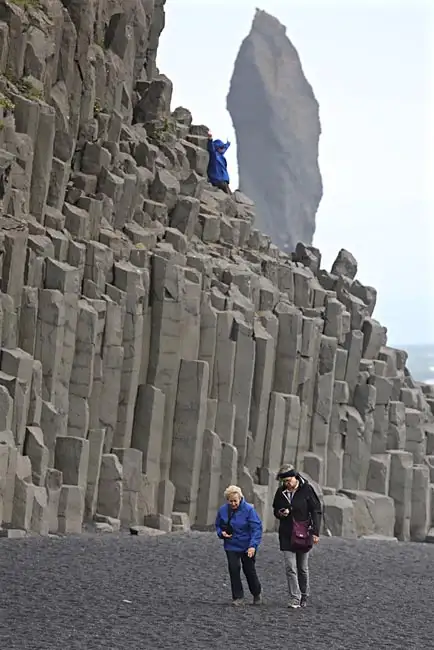
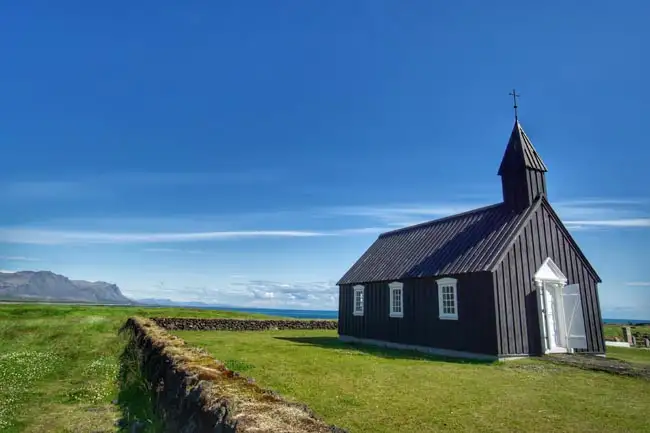
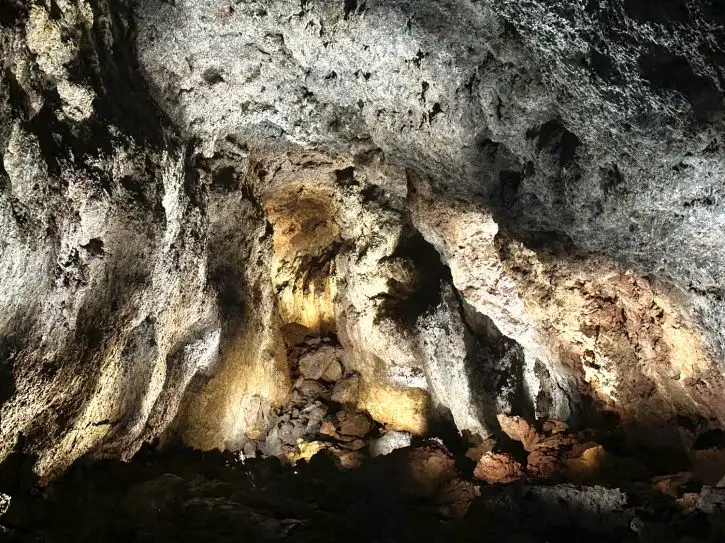
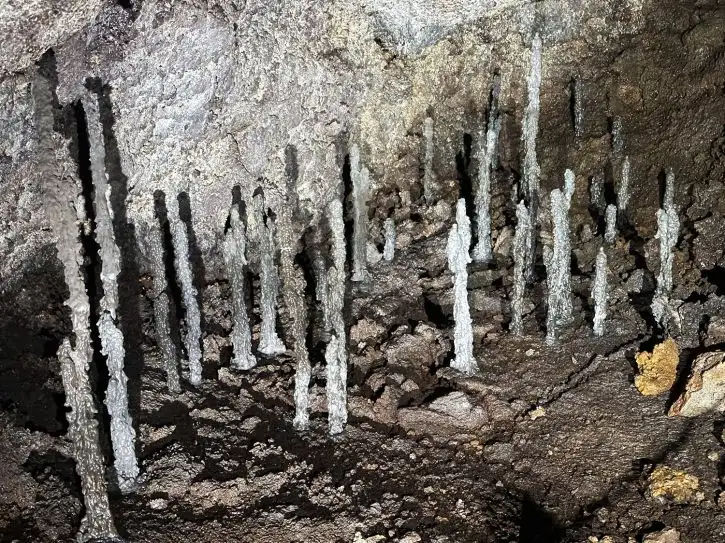
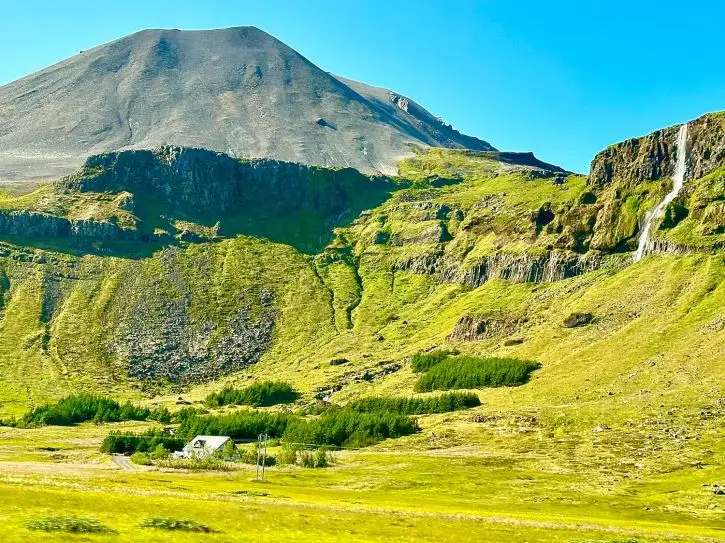
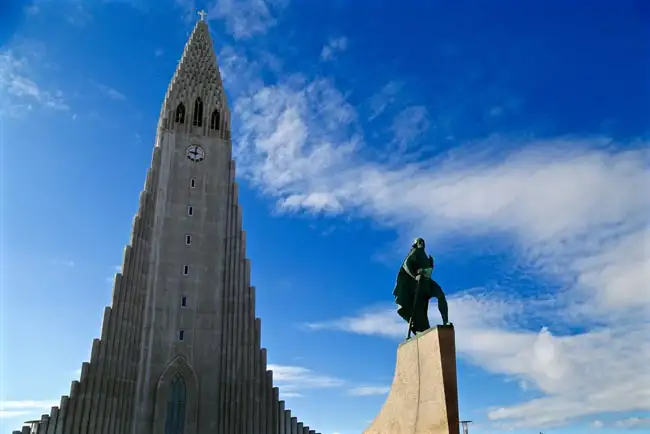

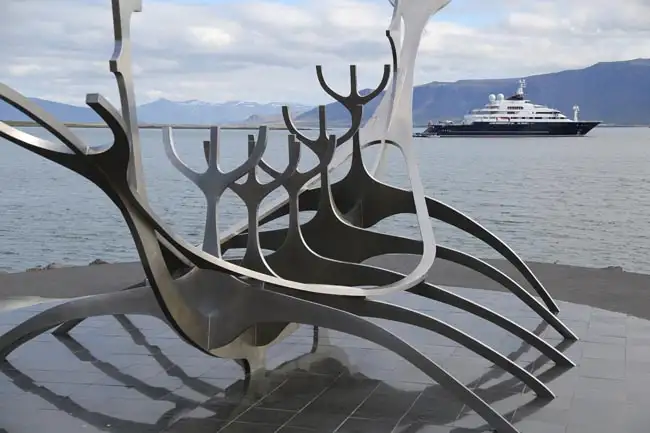
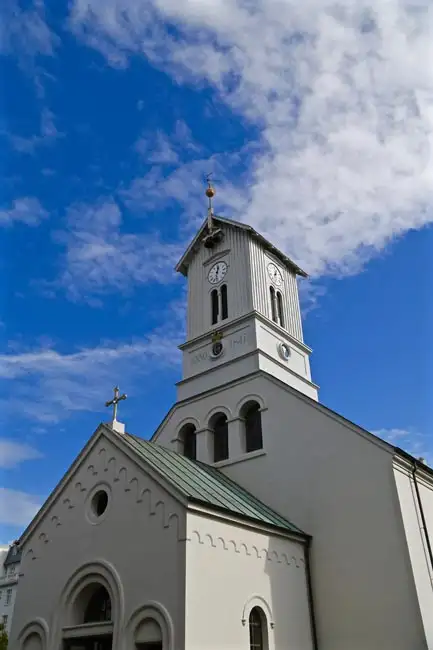
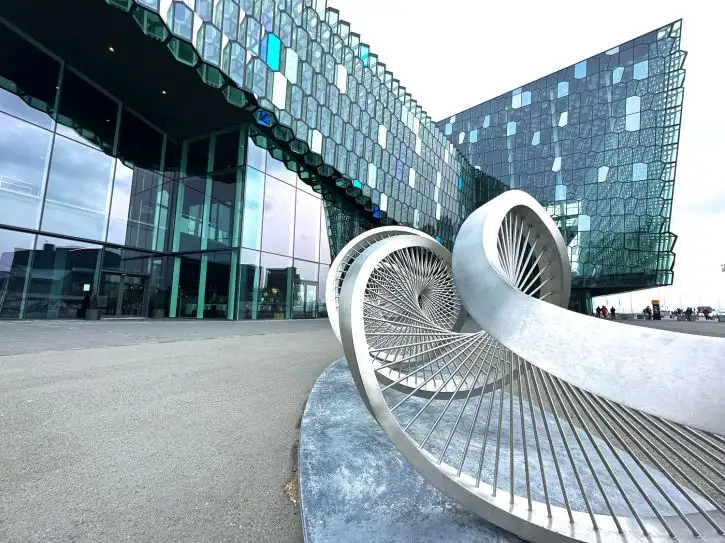
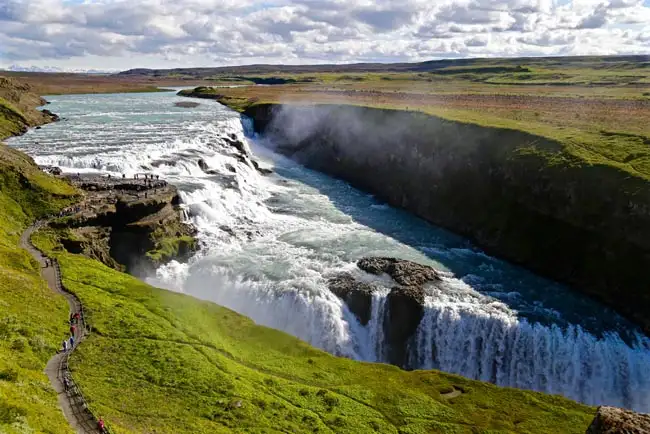
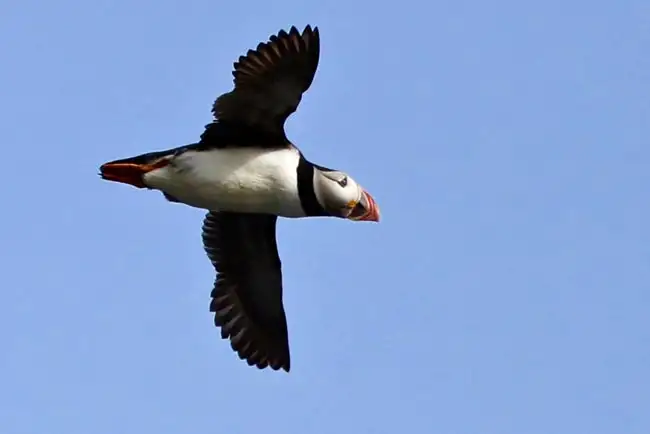
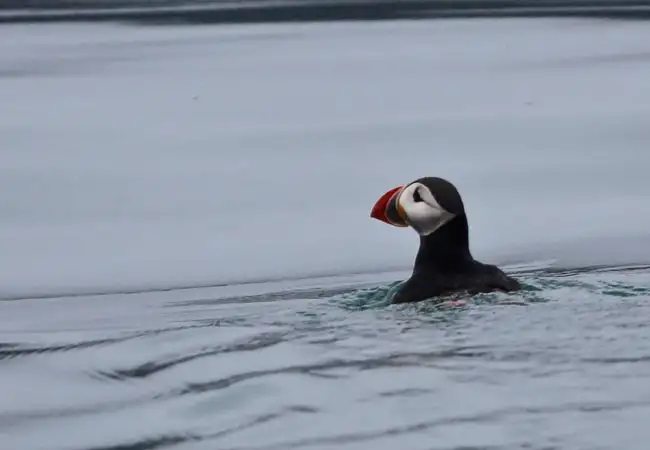
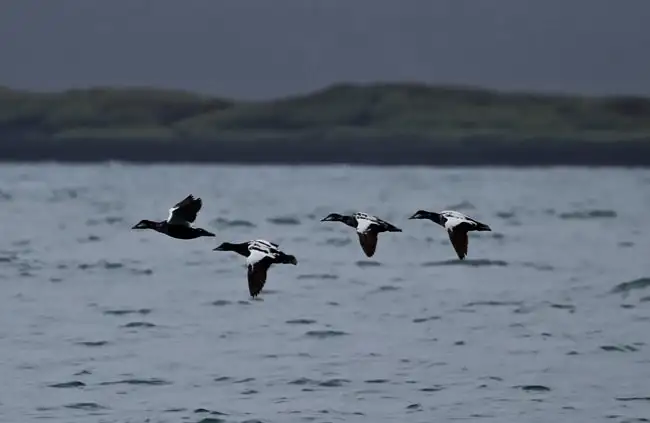
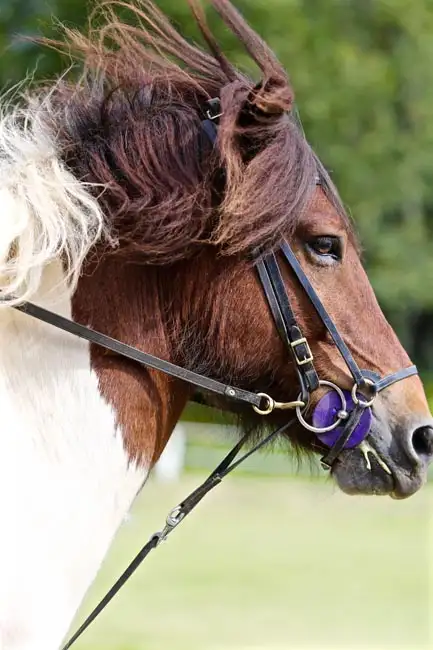
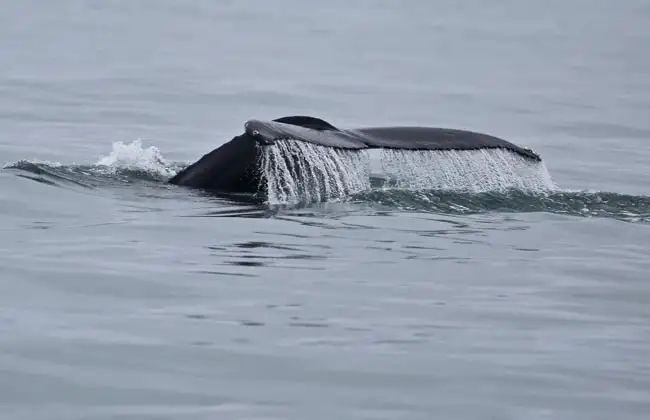
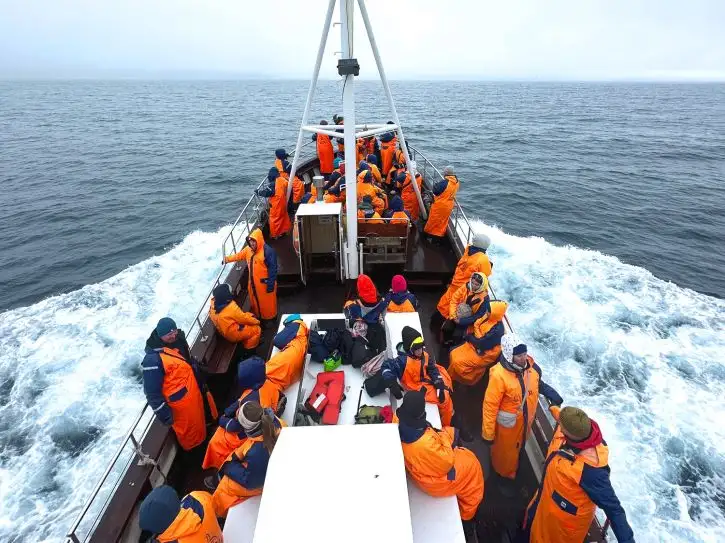
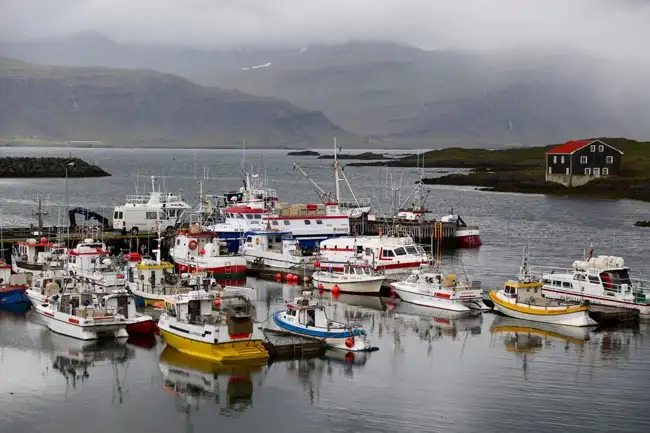
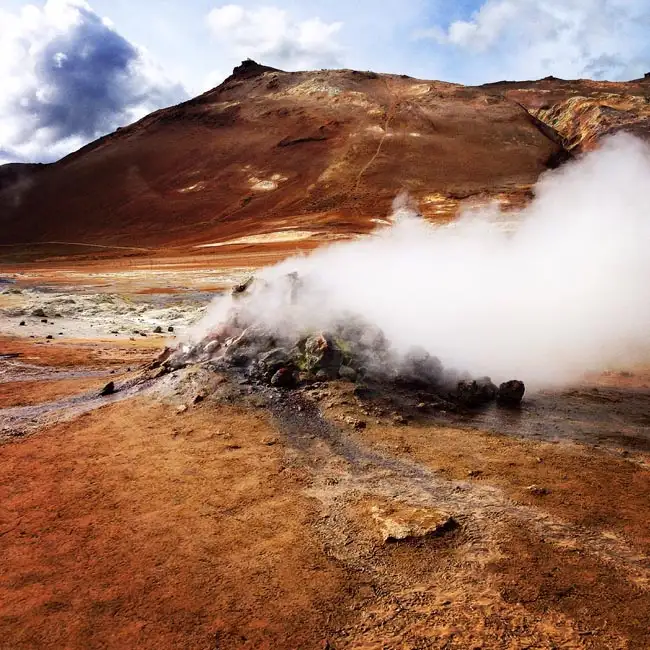
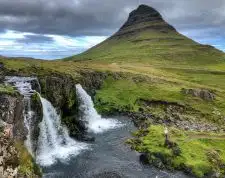
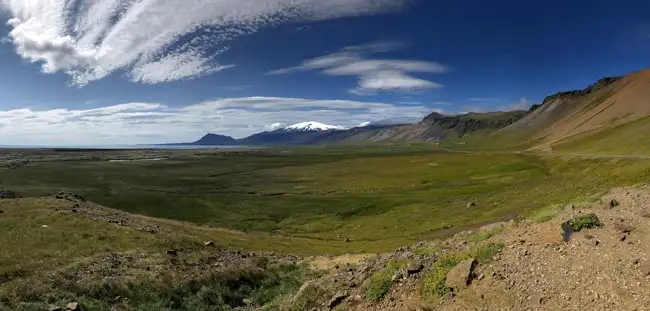
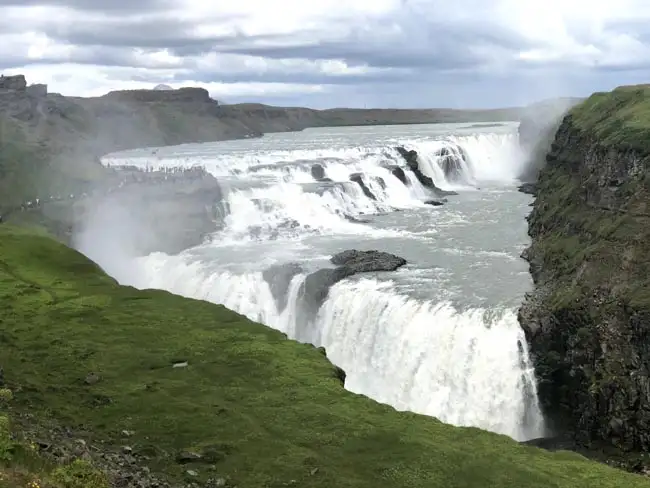
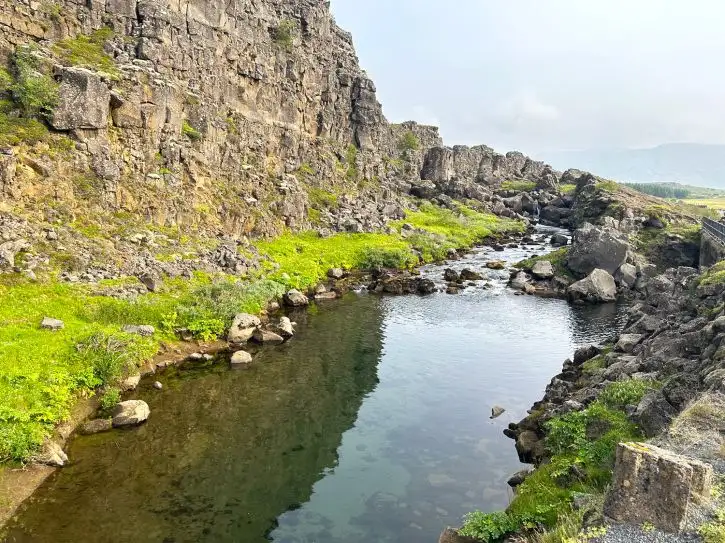
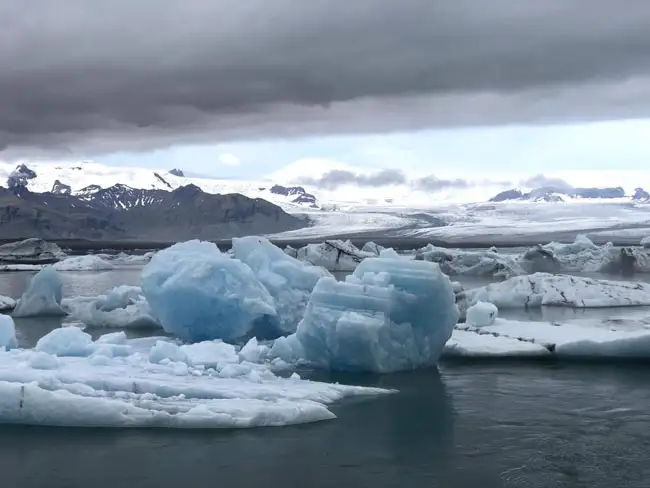

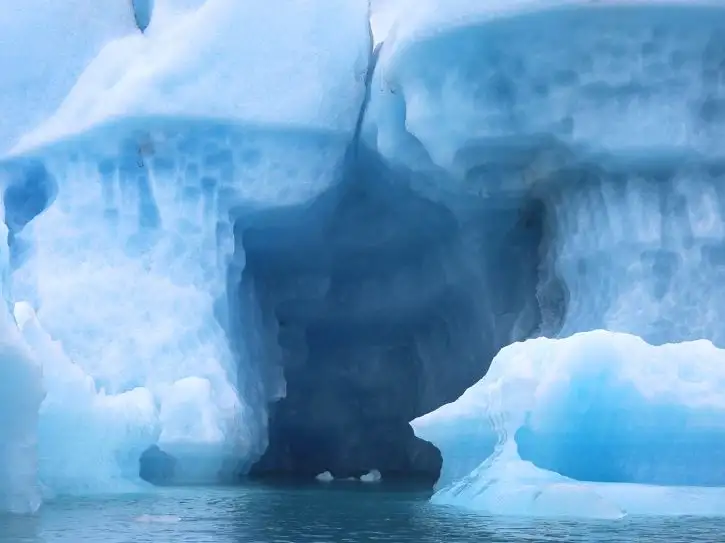
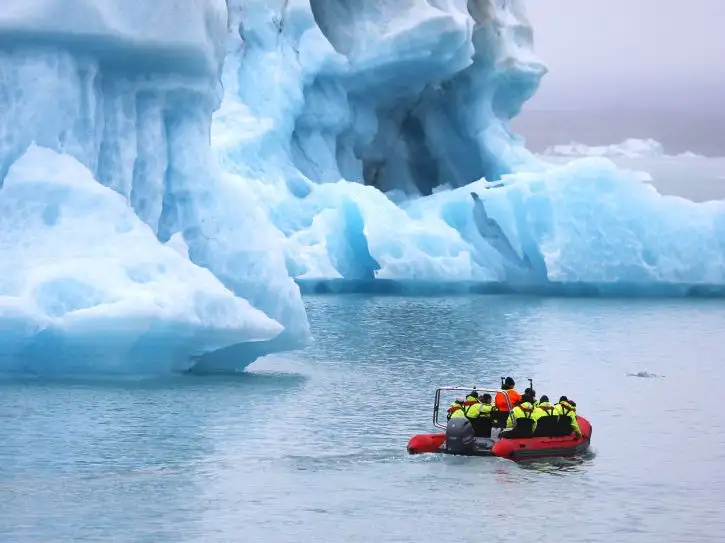
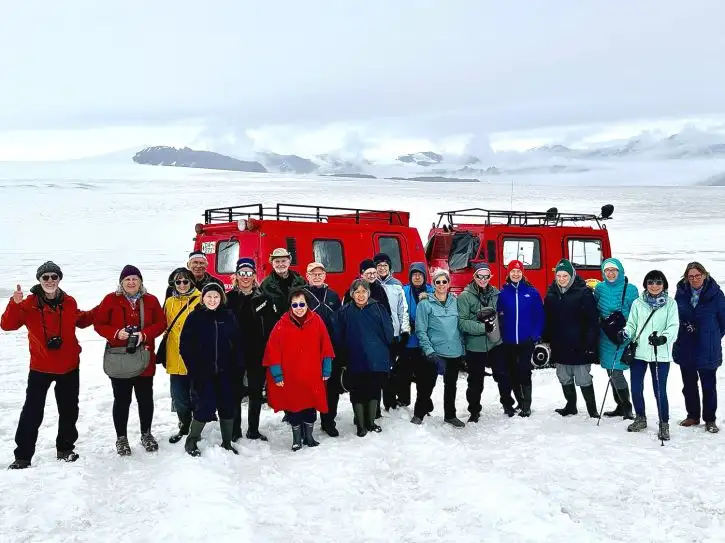
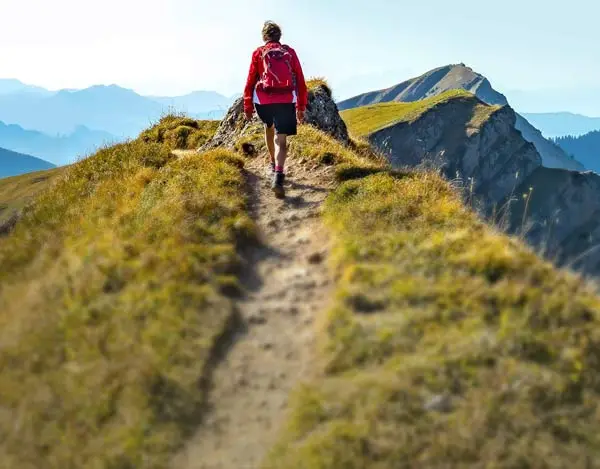
Book This Tour
- Final payment: Due 90 days prior to departure.
- Deposit: A non-refundable $500 CAD Deposit is required at booking.
- Optional Single Supplement: $1970 CAD (number of singles limited).
(View options forsingle travellers) - Transfering Tour or Date: Transferring to another tour or tour date is only permissible outside of 120 days prior to departure and is subject to a $100 CAD change fee.
(Read our cancellation policy)
Prices below are per person, twin-sharing costs in Canadian Dollars (CAD). Pricing does not include airfare to/from the tour and any applicable taxes.
Tourcode: IC3
Frequently Asked Questions
- What is the maximum number of participants on a trip?Most of our tours carry a maximum of 18 participants; some tours (ie hiking tours) top out at 16. In the event that we do not achieve our minimum complement by our 90-day deadline, we may offer group members the option of paying a "small-group surcharge" as an alternative to cancellation. If all group members agree, we will confirm the trip at existing numbers; this surcharge is refundable in the event that we ultimately achieve our regular minimum. If the small group surcharge is not accepted, we will offer a refund of your deposit or a different trip of your choice.
- Can I extend my tour either at the beginning or end? What about stopovers?Yes, you can extend your tour either at the beginning or the end and we can book accommodation in our tour hotel. Stopovers are often permitted, depending on air routing. Stopovers usually carry a "stopover" fee levied by the airline.
- How do I make a reservation? How and when do I pay?The easiest way to make a reservation is via our website; during office hours, you are also more than welcome to contact us by telephone.
A non-refundable deposit is payable at the time of booking; if a reservation is made within 90 days, full payment is required. Some trips require a larger deposit. If international airline bookings require a non-refundable payment in order to secure space or the lowest available fare, we will require an increase in deposit equal to the cost of the ticket(s).
Early enrolment is always encouraged as group size is limited and some trips require greater preparation time.
Once we have received your deposit, we will confirm your space and send you a confirmation package containing your trip itinerary, any visa/travel permit related documents, invoice, clothing and equipment recommendations, general information on your destination(s), and forms for you to complete, sign and return to us. Your air e-tickets (if applicable), final hotel list, final trip itinerary, and instructions on how to join your tour, will be sent approximately 2-3 weeks prior to departure. - What about cancellations, refunds, and transfers?Please review our cancellation policy page for details.
- I am a single who prefers my own room. What is a single supplement?All of our tours have a single supplement for those who want to be guaranteed their own room at each location.
This supplement is a reflection of the fact that most hotels around the world do not discount the regular twin-share rate for a room by 50% for only one person occupying a room. Most hotels will give a break on the price, but usually in the range of 25-30% of the twin-share rate. This difference, multiplied by each night, amounts to the single supplement.
The conventional amount can also vary from country to country and some destinations are more expensive than others for single occupancy. In order to be "single friendly," the supplements we apply are not a profit centre for us and we do our best to keep them as reasonable as possible.
On most tours we limit the number of singles available, not to be punitive, but rather because many hotels allow for only a limited number of singles; some smaller hotels at remote locations also have a limited number of single rooms available.
Please note that most single rooms around the world are smaller than twin-share rooms and will likely have only one bed. - Do you have a shared accommodation program?Yes! If you are single traveller and are willing to share, we will do our best to pair you with a same-gender roommate. Please note that should we fail to pair you, we will absorb the single supplement fee and you will default to a single room at no extra charge.
